Bruce Bennett takes the Tamron SP 70-200mm F/2.8 VC lens out for a spin at the rink for a figure-skating performance and NHL game.
Article by Jenn Gidman - Images by Bruce Bennett
Bruce Bennett has been photographing on the ice for nearly four decades. From his early shots of a young Wayne Gretzky to his coverage of dozens of Stanley Cup matchups and figure-skating competitions, the director of photography for Getty Images' hockey division knows how to freeze the action and capture the big moments that make ice sports so compelling.
Bruce recently headed out to the rink for two events: an NHL hockey game between the New York Rangers and Washington Capitals and an ice-dancing performance by Long Island-based figure-skater Joelle Forte. Bruce brought along the Tamron SP 70-200mm VC lens to help him nail every breakaway and butterfly jump. "The 70-200 gives you a great focal length range for shooting from the corners of the rink," he says. "This lens is really responsive and very sharp, which makes a huge difference in this type of photography."
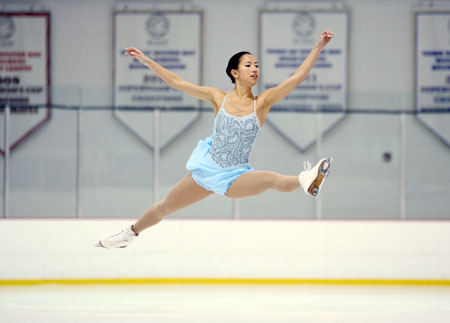
Read on for Bruce's tips on how to effectively capture all the action on the ice.
Get your exposure down. It's almost impossible for someone to shoot using automatic settings and have properly exposed photos on the ice. The white ice is going to throw off the camera exposure in such a way that everything you shoot will basically be gray.
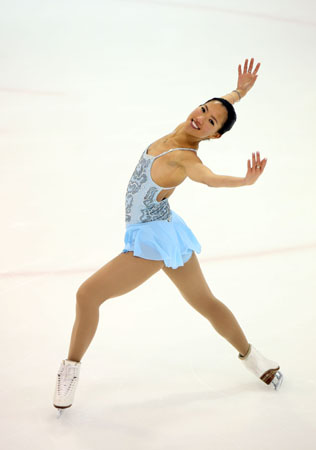
In the old days, we used to focus on someone wearing a neutral-colored outfit and do a meter reading off of her, then lock it in. Now the general rule of thumb is to do a meter reading off of the white: You can point your camera at the ice itself and then open up about two stops, which will get you closer to where you need to be. You can simply look at the screen on the back of your camera, magnify the image, look at the skin tones, and see if your exposure is correct that way.
Shed some light on the athletes. In professional sports, we use high-powered strobe units that are placed in the rafters in the arenas. That allows us to use a lower ISO, which gives us pictures that aren't as noisy as pictures shot at, say, ISO 1600. It also results in crisper colors. In smaller rinks, we use smaller portable flash units. As long as you have rafters or somewhere you can put these units up high, rather than pointing them directly into the skaters' faces, you can use those instead of just relying on available light. You'll see immediate benefit in terms of color and quality.
Find the best vantage point. In NHL arenas, there are up to eight holes you can shoot through in the plexiglass, usually in the corners. I've been to arenas, though, where we don't have those holes. I think back to the Olympics in Vancouver, where there were upward of 60 photographers at ice level, with no holes in the plastic to shoot through. In these cases, you have to hunt for the cleanest section of glass.
If you're shooting through plexiglass, you also need to keep your focal length short. You have a much better rate of success using the 70-200 if you're shooting somewhere between 70mm and 135mm. The angle at which your lens hits the glass is also very important: The more of an angle, the more chance you'll introduce the imperfections of the plexiglass into the image. You're best off in these cases picking a corner of the rink, where you have some mobility to shoot toward the net and also up-ice a little bit to get players in your own zone.
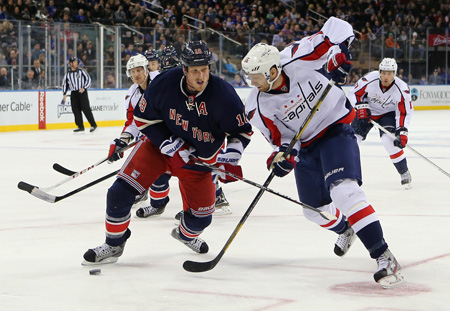
Focus fast. Luckily, the autofocus on even the most basic camera models, along with a lens like the 70-200mm, means you can do pretty well photographing a bunch of different ice sports. One tip to keep in mind: If you use a focusing method that only provides one dot you use to focus on your subject, you'll get infinitely faster focusing than if you select an area with 20 dots and the camera has to figure out what to put in focus. You'll achieve a higher rate of images in focus by using a focusing method based on this single dot.
You can also sometimes prefocus in hockey, like when a player is getting ready for a faceoff. You can focus on the player, and as soon as the puck is dropped and the player starts the movement, you should be able to take the shot before he moves out of your range of focus.
Freeze the action. For indoor sports, I usually like my shutter speed to be anywhere from 1/800th of a second and up. So I have to back into the numbers and say, "OK, if I'm at 1/800th of a second, the lens can be wide open at F/2.8," and my ISO then follows from that.
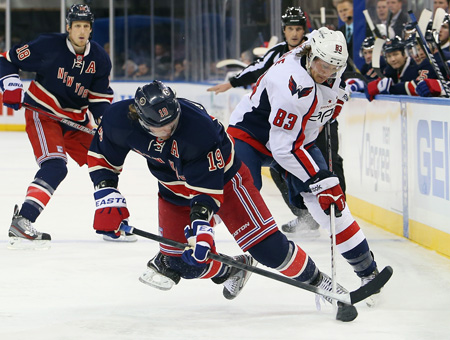
The higher the ISO, the grainier (or noisier) the image will be, so you don't want to just crank that ISO up right away. Shooting at 800 or 1600 ISO is typical indoors, though with the newer cameras, I can get away with 4000 or 5000 ISO before I start to see major degradation of the image.
Generally in professional sports arenas, when you're not talking about spotlit scenes, I'd suggest shooting at 1/800th of a second, F/2.8, at 800 ISO as a starting point. In a smaller arena, you might want to try 1/800th of a second, F/2.8, at 1600 ISO. However, it varies so greatly from arena to arena that your best bet is to get in as tight as you can for a meter reading on someone who's standing out on the ice in the area where you're going to be photographing.
Put together a variety of shots. When you come out of an event, you want a well-rounded portrayal of that event. You don't want to come off the ice with 500 full-length, isolated vertical images of a single figure-skater. If you have a little mobility, using the 70-200 gives you the opportunity with a sport like hockey to get those different type of images, like shooting people skating in toward the goalie. Then, when players head to the faceoff circle, you can zoom in to 200mm and get a tight head shot of them waiting for the puck. You want to put all that material together to show what you can do at an event like that and also to be visually interesting to a viewer.
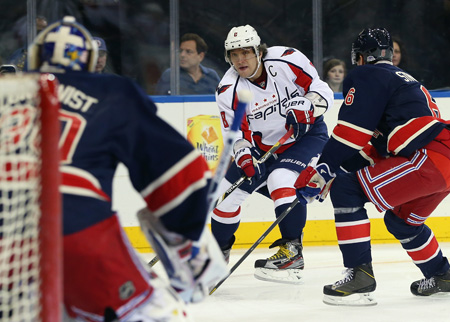
You also should try to get some images off the ice. For instance, with figure skating, maybe you can get over near the area where the skaters take a break so you show them drinking Gatorade or talking to other participants. That kind of detail makes you more of a complete photographer.
Eliminate distracting elements. You always have to be cognizant of what's happening in the backgrounds. Distracting backgrounds will kill a photo every day of the week. What I say is: Go high, go low, and go 360 degrees around. If you have the opportunity to shoot from a higher angle or a lower angle, or to move completely around your subject, that gives you more of an opportunity to eliminate these distracting elements.
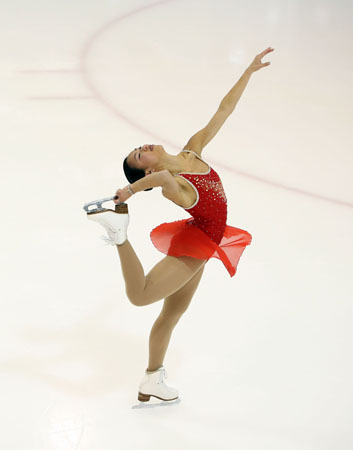
Hand in hand with that: Get in tight, then get in tighter. As much as you can fill that frame, the better: Doing that gets rid of distracting elements in the background and gives your image more impact.
Resist the temptation to stop shooting When you're shooting fast-action sports on the ice like this, you need to work on your patience. Too often, the moment you put your camera down is when you miss a really good shot. I've seen too many photographers shoot a few images, then go through and look at all the digital images they just shot. I've done it at times, I see it at pro events, and I especially see parents doing it - they want to know right away if they got the shot. The problem is, in getting that instant gratification, you're probably missing something else. Have the patience to wait for the great shots to happen, and the diligence to always keep your camera up so you can shoot them.
To see more of Bruce Bennett's work, go to www.brucebennettstudios.com.

